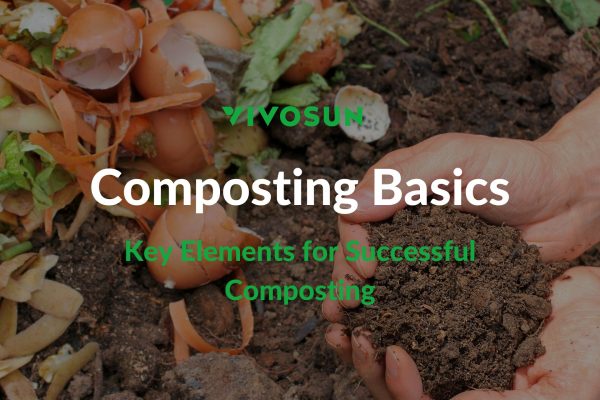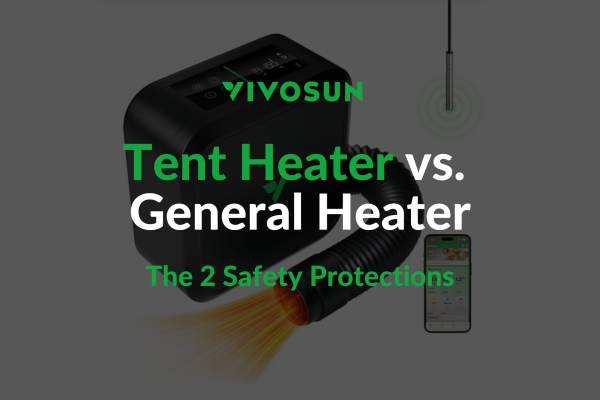Alright, so you’re just about to start your new growing operation. Whether big or small, you’ll need to figure out a few things before you start purchasing equipment and once you do, you’ll also need a short checklist for the type of equipment you’ll need.
We put together a short article to help address a few points we believe every new grower should consider before they go out and purchase their next setup—some of these are common sense but we need to share them anyways. Let’s get down to it.
First, there are four main factors you’ll need to consider in the checklist before you buy equipment:
- Space
- Safety
- Growing medium
- Your goals
We’ll take a look at it one at a time.
Space
When you start growing you’ll obviously need to look for a place to set up your growth. There are two predominant types of spaces: generally grow spaces (can be anything from a closet to a garage to a basement to a warehouse) or a grow tent, which is basically a grow space built with a reflective surface.
Between the two, a grow tent tends to be a better fit for most new growers because the environment is much easier to control—this means humidity and temperature—and since there are so many sizes of grow tents out there, you’ll find one that fits the space you’re planning to use. Further, grow tents ensure that the light emitted by grow lights isn’t too disruptive. Grow rooms are great but you’re going to have a higher risk of contamination, pest invasion, and you’ll likely have to use extra equipment to balance heat and humidity.
That brings us to our second point: once you have settled on a space, ensure that the space is as clean as it can be before using it and when you enter the space ensure that you wear protective coverings or at the very least clean clothing (clothing that you do not wear outside, that hasn’t been in contact with pets if possible). This is important because the number-one way pathogens will enter your tent will be on your clothing (if you choose to grow in another type of space make sure that it is a sealed environment, if possible).
When choosing your space think of the following:
- Cannabis plants vary in size and height. What strain do you want to grow and how big will it get?
- How much space do you have available for growing?
- Calculate the square footage by multiplying the length and width of the space—this will give you the floor area. Use this to help you determine how many plants will fit there.
- Use the floor area to also help you find the right grow light system.
- Next, multiply the floor area by the height of the room. This will give you the cubic space. Use your cubic feet space to purchase the correct size ventilation fan, measured in Cubic Feet per Minute (CFM). You will likely want a CFM slightly higher than the cubic feet in your grow tent because heat, bends in ducting, filters, and silencers all add to CFM requirements.

My grow space. Don’t be jealous, you’ll get here eventually!
Safety
Strangely, safety is something a lot of companies just assume people know about. We want to make a few notes and reminders about building a safe set-up, especially inside your home.

First and foremost, we need to talk about electricity. Almost all your grow equipment requires electrical input to operate, and the majority of your equipment will be compatible with your at-home outlets. However, most High-Intensity Discharge (HID) systems use a ballast to convert the voltage from your outlet to a usable voltage high enough to turn metals into vapor, thereby creating light and heat. So let’s say a couple things about safety:218463112
- NEVER allow high energy-use equipment to share one outlet! DO NOT USE A POWER STRIP! This doesn’t just mean, “Don’t plug two lights into the same power strip,” it means ONLY ONE PIECE OF EQUIPMENT PER OUTLET. Otherwise, you risk overloading your circuits and GREATLY INCREASE THE RISK OF ELECTRICAL FIRES.
- DO NOT USE POWER STRIPS. Just don’t do it. And DO NOT USE EXTENSION CORDS unless they are UL-listed, and they can handle high input currents. Don’t use an extension cord at all if you don’t have to, but if you have no other choice, get one from a hardware store and consult with the electrician there to find an appropriate model.
- DO NOT USE DOUBLE-ENDED MALE POWER CORDS. These are called suicide cables and they are illegal. You should never have a situation where you need these. Please do not use them, they are extremely dangerous.
- Do not expose your equipment to water. Do your best to keep all electronics away from any water. Moisture and humidity are unavoidable, and most equipment can handle high humidity but water in liquid form can find its way into the electronic components of your equipment and can damage it or perhaps can cause a fire.
- Always make sure that you have proper ventilation to allow for CO2 circulation. We strongly recommend against using burners or propane tanks to replenish CO2 because this, mixed with a lot of electrical equipment and fertilizers can be dangerous!
- We do not recommend you make any structural modifications to your space for your growth. Changing the structure to fit lights or equipment can put your structural integrity at risk. This is another reason we recommend using a tent.

DON’T EVER THINK ABOUT IT!
Medium
There are dozens of different types of growing media out there and choosing your media. They all have benefits and drawbacks and different space requirements. Let’s take a look at some of them here.
| Medium | Benefits | Drawbacks |
| Potting soil |
|
|
| Coco-coir |
|
|
| Hydroponics |
|
|
| Rockwool |
|
|

Coco-coir


Hydroponics
A Note on Electricity Cost:
The VIVOSUN electricity usage monitor is a convenient device for tracking the power consumption and associated costs of grow lights and other equipment in a grow tent setup. Here are some key points about using it to monitor electricity costs:
To estimate your monthly electricity costs for a grow tent, you would plug the monitor into an outlet and your grow lights/equipment into the monitor, record the power consumption and run-time each day, calculate the kWh usage by multiplying watts by hours of usage and dividing by 1000, multiply kWh by your local electricity rate to get the daily cost, then multiply the daily cost by 30 to estimate the monthly cost.
For example, if you are running a 1000W LED grow light in your grow tent for 18 hours per day, and the local electricity rate is $0.12 per kWh, your monthly electricity cost would be approximately $64.80. The calculation is: 1000W x 18 hours = 18,000 watt-hours (Wh), 18,000Wh / 1000 = 18 kilowatt-hours (kWh), 18kWh x $0.12/kWh = $2.16 per day, $2.16 x 30 days = $64.80 per month.
Therefore, by using the VIVOSUN power monitor in combination with your actual device wattage and operating times, you can very accurately assess and calculate the actual energy costs for your specific growing environment, allowing you to better control and optimize your electricity expenses.
Tips and Suggestions:
- Use energy-efficient LED grow lights whenever possible, as they can greatly reduce power consumption.
Adjust lighting times based on the plant growth cycle to avoid unnecessary waste. - Consider running equipment during off-peak hours when electricity rates are lower to save costs.
- Regularly clean light fixtures and reflectors to ensure maximum light utilization.
- Calculate the power consumption of auxiliary devices like heaters and fans when using them as well.
- Closely monitor changes in electricity rates and adjust your growing plan accordingly to control costs.
Explore the possibility of using renewable energy sources like solar panels to power your growing equipment.
Your goals
Now that you have most of your space organized and what kind of growth, you’ll be doing it is time to start thinking about what kind of goals you have for your growth:
- Do you want to sell your product? If so, what kind of licensing will you need and where will you sell it?
- Do you plan to grow for personal use? How much cannabis do you regularly use?
- How much do you want to spend on your setup?
- How much is electricity in your area and how much are you willing to spend on powering your growth?
- What kind of “high” do you like?
- What kind of flavors do you enjoy?
- Do you need to have a clandestine grow, or can you spread your space out?
- Do you want to grow for the indefinite future, or do you only plan to grow a couple times?
There are probably more questions coming up as you continue to look into products, such as, What equipment do I need exactly? (Luckily, we have a grow kit ready for you!) What kind of extras do I want? Do I want some high-tech stuff (sgs) that will make my life easier? There are so many options it’s easy to be overwhelmed! Just remember if you have any questions you can always contact us and we would be happy to help!
We hope this guide was useful to you and we would love your feedback. Feel free to leave a comment if you have anything on your mind, we like to hear from you. And remember to subscribe to our newsletter for great deals and more tips and tricks every week.







